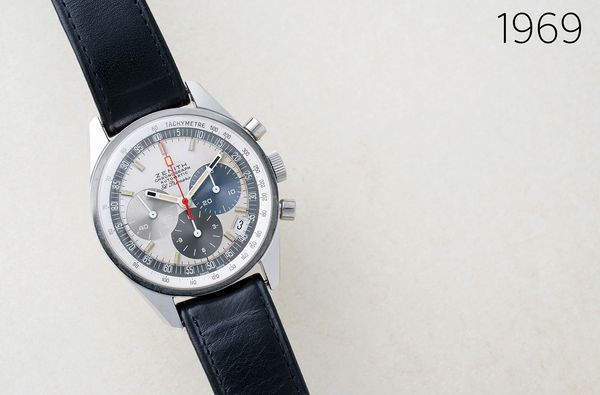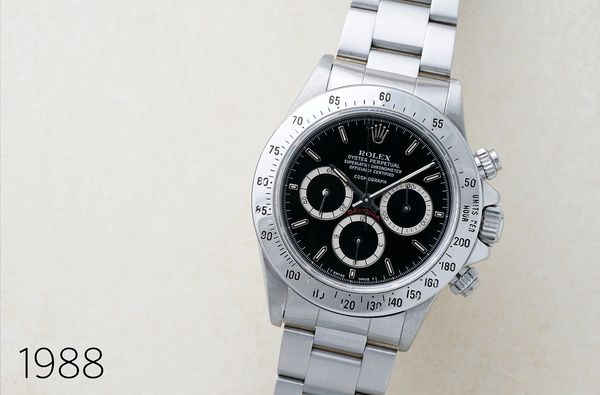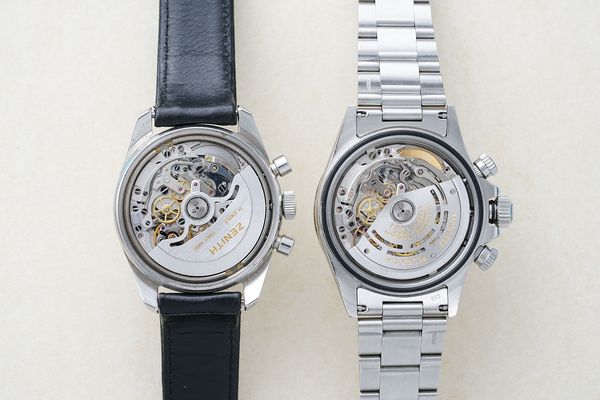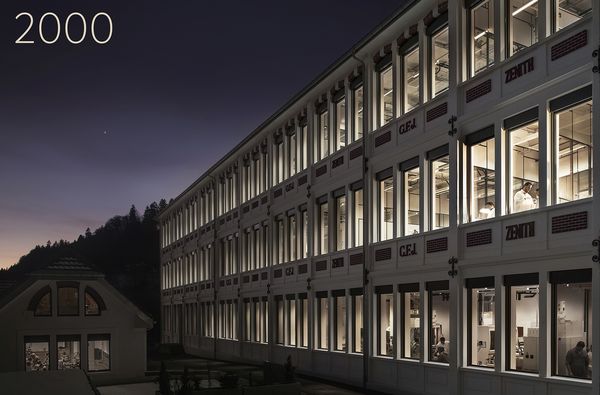- by Arthur Touchot
Lot 134 of The Geneva Watch Auction X
The launch of the El Primero was a momentous occasion, not just for Zenith and the hundreds of watchmakers based in and around Le Locle, but for the industry as a whole. Unveiled in 1969, after more than seven years of research and development, the El Primero’s Calibre 3019PHC was the world’s first high-frequency automatic column-wheel chronograph but Zenith was unable to capitalise on its latest movement and instead of launching the company into a new era, it would be the last mechanical movement to come out of the manufacture, for quite some time.
Zenith was purchased by an American radio company - coincidentally also named Zenith - in 1971. This marked the beginning of the end for the brand’s mechanical chronograph - too costly and soon to be made obsolete by the latest technology, according to the watchmaker’s new owners. Like many, they viewed Quartz as a better long-term investment. This decision did not go down well in Le Locle, and workers desperate to save the brand’s heritage acted fast to save the equipment and all the plans used to make the El Primero, by hiding them in the attic of one of the company’s factory buildings. The plan was secretly executed by Charles Vermot, a then senior engineer and head of development for the El Primero's ébauches department, in 1976.
Lot 114 of The Geneva Watch Auction X
Little did Vermot know that by saving the El Primero's tools and plans, he would directly impact another watchmaker’s history. Indeed, Rolex began showing interest in Zenith’s chronograph in the early 1980s, having decided to update the Daytona family by moving away from manual winding movements, and opting instead for an automatic version. Instead of building their own, Rolex contacted Zenith to find out if they could resume the production of El Primero movements. When Vermot found out, he unveiled his secret deeds and led Zenith’s executive team to the attic, where a diligent record of the movement’s parts and assembly had been safeguarded for nearly ten years.
Zenith gave their nod to Rolex - signing what was at the time, one of the most lucrative contracts in the watchmaking industry - and in 1988, the company began delivering movements custom-built to Rolex’s specifications. The date function was removed, the frequency of the balance wheel reduced to 28,000 mph, and other modifications made, but the movements of the El Primero and the Rolex Daytona Ref. 16520, were structurally the same - the latter would become known to collectors as the “Zenith” Daytona. Finally, in 1988, Rolex introduced a self-winding Daytona, and just like that, Rolex entered the modern era, and Zenith became one of the largest chronograph manufacturers, making way more movements than completed watches.
After years of happy collaboration, the relationship between Rolex and Zenith ended in 2000, with the launch of Rolex’s first in-house chronograph movement. Made for the latest Daytona, the Calibre 4130 was very similar to the El-Primero based Rolex Calibre 4030, in its basic architecture and functionality, but it was 100% made by Rolex. Zenith took back full ownership of the El Primero and leaned fully on its historic importance to carry the brand into the next millennium.
Lot 136 of The Geneva Watch Auction X, a unique El Primero A386 in platinum, sold for charity
Fifty years after the launch of the El Primero, the chronograph remains central to Zenith’s story. It is by far and away the model collectors associate most with the Le Locle-based brand, and while the movement is now made exclusively for its creator, it still dominates Zenith’s annual production. This year, Zenith paid homage to the chronograph by releasing several models inspired by its past, including faithful re-editions of some of its most popular references. In addition, Zenith is entrusting Phillips with an extremely special unique Reference A386 in platinum, designed by Phillips in Association with Bacs & Russo with features that have never before featured in a ref A386, and sold for The Geneva Watch Auction X on November X to benefit the ZOE4LIFE foundation. This “One-Off” El Primero will be the first and the only Zenith makes in PT 950 platinum, and will have a unique dial made from a Lapis Lazuli. For more on this piece, please click here.






